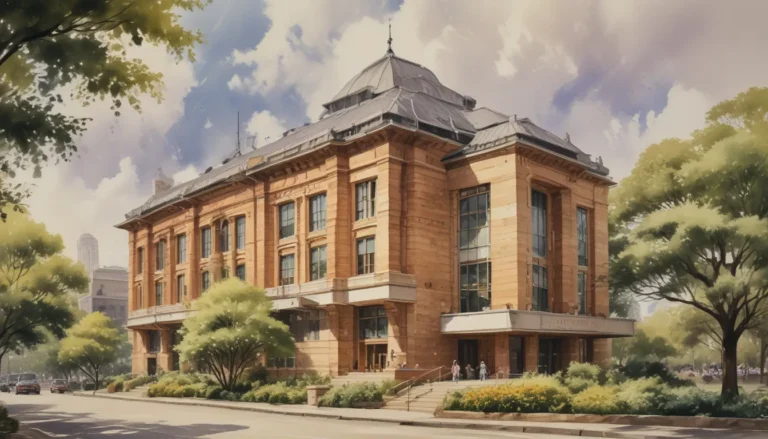The images in our articles are for illustrative purposes only and may not exactly match the content. They are intended to capture your interest and complement the text, not to replace it.
Unravel the mysteries of Lothal, a remarkable ancient city nestled in Gujarat, India, that stands as a testament to the advanced urban planning and maritime activities of the Indus Valley Civilization. Let’s embark on a journey through time and explore the astonishing facts about this ancient city that continue to captivate researchers and visitors alike.
The Magnificence of Lothal
Lothal, meaning “the mound of the dead” in Gujarati, was a bustling hub of trade and a significant city of the ancient Indus Valley Civilization. Dating back to around 2400 BCE, this ancient marvel flourished for over 4,000 years, showcasing its architectural brilliance and maritime prowess during the Bronze Age. Let’s dive deeper into the wonders that make Lothal a remarkable historical gem.
Architectural Marvels of Lothal
Advanced Urban Planning
Lothal boasted a highly developed urban planning system with a grid-like layout comprising well-defined roads, drainage systems, and houses constructed from baked bricks. This intricate urban design highlights the sophisticated engineering skills of its inhabitants.
Underground Drainage System
One of the earliest examples of urban sanitation in the ancient world, Lothal’s efficient underground drainage system successfully channeled wastewater outside the city, ensuring cleanliness and hygiene for its residents.
Intricate Water Reservoir System
The city’s sophisticated water reservoirs were strategically designed to store and manage water for daily use and irrigation purposes, emphasizing the importance of water conservation and management in ancient civilizations.
Maritime Trade and Craftsmanship
Flourishing Trade Connections
Located near the Gulf of Khambhat, Lothal served as a major center for maritime trade, facilitating exchanges with neighboring civilizations. The city’s vibrant marketplace traded goods from diverse regions, including Mesopotamia, Persia, and Egypt.
Unique Dockyard
Boasting one of the world’s oldest and best-preserved dockyards, Lothal’s basin and navigable channel connected it to the sea, highlighting the city’s maritime ingenuity and shipbuilding industry.
Artistic Endeavors
Renowned for its bead making and pottery industries, Lothal artisans crafted intricate beads from various materials and produced high-quality pottery, offering valuable insights into the lifestyle and culture of the ancient inhabitants.
Cultural Significance and Mysteries
Spiritual Practices
With elaborate underground fire altars serving ceremonial purposes, Lothal was a spiritual center where religious rituals played a significant role in the daily lives of its people, showcasing the spiritual depth of the ancient civilization.
Metalworking Expertise
Skilled in metalworking, particularly in copper and bronze, the people of Lothal crafted a wide range of artifacts, including tools, utensils, and ornaments, highlighting their technological advancements and craftsmanship.
Enigmatic Decline
Despite its prominence, the decline of Lothal remains shrouded in mystery, with theories attributing factors such as natural disasters, changes in trade routes, or environmental shifts as potential causes of the city’s abandonment.
Unveiling the Legacy of Lothal
In conclusion, Lothal stands as a remarkable archaeological site that embodies the ingenuity and cultural heritage of the Harappan civilization. Its advanced engineering, urban planning, and maritime trade activities offer a glimpse into the complexities of early human societies, inviting visitors to explore the remnants of a bygone era.
FAQs
- What is the significance of Lothal?
-
Lothal holds immense significance as a major city of the ancient Harappan civilization, showcasing advanced urban planning and maritime engineering.
-
How old is Lothal?
-
Dating back to around 2400 BCE, Lothal is approximately 4,400 years old, embodying the rich history of the Bronze Age.
-
What artifacts have been found in Lothal?
-
Archaeologists have unearthed a diverse range of artifacts in Lothal, including pottery, beads, jewelry, seals, tools, and architectural structures like a dockyard and water reservoirs.
-
Can visitors explore Lothal today?
- Yes, visitors can delve into the archaeological site of Lothal, where the ruins of the city and a museum exhibit excavated artifacts, offering a glimpse into ancient history.
Uncover the wonders of ancient civilizations by exploring the mysteries of Lothal and beyond. Delve into the advanced urban planning of Dholavira, discover the rich past of Cyprus at Kourion, or immerse yourself in the artistic legacy of the Ajanta Caves. Each destination narrates a unique story of human ingenuity and cultural heritage, waiting to be uncovered.
As we continue to share fascinating insights, rest assured that our commitment to quality and authenticity remains unwavering. Explore, learn, and embark on a journey through history with us, as we uncover the wonders of the past.






